How to fish Twll Run on the Welsh Dee at Bangor-On-Dee
Table of Contents
Twll Run is a short 100m stretch of water that is located directly after Joby’s Pool and runs into the Pump House Pool.
The riverbed is mainly composed of gravel with occasional boulders scattered close to the far (left) bank. When the river is close to its summer level, I find it easy to wade down close to the right bank and fish the fly for grayling, trout and salmon.
On working through this guide, you will learn the different approaches I employ for catching grayling and brown trout; and how best to adjust your approach for different river & weather conditions.
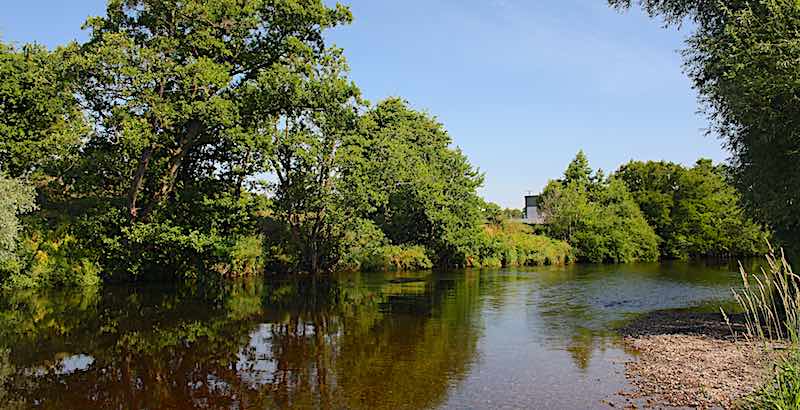
Trout and grayling fishing
I prefer to fish Twll Run when the river is less than ca. 0.6m @ Manley Hall gauge.
In summer when the river is low, trout & grayling move up into this fast, oxygenated water from the Pump House Pool.
To help with the account of how I fish this run I have produced the following sketch that show the various features of the pool and where I normally catch trout and grayling.
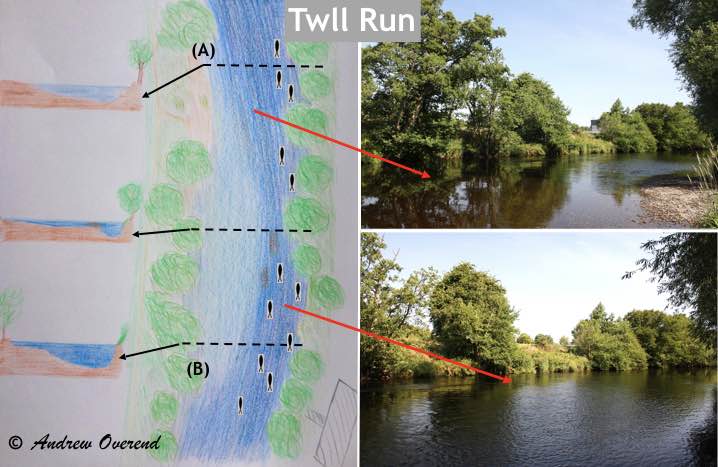
Euro Nymphing
In the absence of emerging flies and/or rising fish, I usually start by Czech nymphing because the fish likely to be grubbing on the riverbed for food. My Czech nymph selection depends on a number of conditions; covered separately on the Czech nymphing technique page.
Usually, I start fishing Twll Run from the tail of Joby’s Pool (point A) and search the riverbed from the right bank towards the far bank. Then fish back to the near bank at a 45oC downstream angle.
Repeating this process to cover as far down the run until it’s too deep to wade. Grayling can be resting in water less than 1ft deep, so don’t rush out to fish the deeper water.
Trout, on the other hand, prefer the shelter of the far bank and any underwater obstacles. Therefore, a stealthy low profile is the order of the day.
In addition, starting at the bottom of the run (point B) and fishing upriver is a better approach for trout.
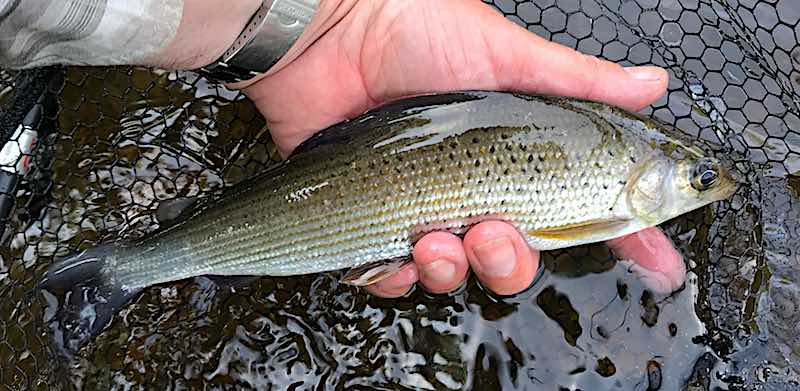
Fish Twll Run with wet flies:
If Czech nymphing through the riffle is either unsuccessful or I notice fish taking flies, then I switch to fishing a team wet flies or spiders. Often, at some point during the day fish start taking flies in the subsurface layers, usually:
- around mid-day during the cold months,
- during summer at either end of the day: early morning and especially late evening.
Normally, I start fishing the wet-flies or spiders from the head of Twll Run (point A) and slowly work down river.
Avoid the temptation to cast directly to fish rising close to the far bank.
A better approach is to divide the width of the river into 3ft lanes and search each lane before the lane holding the rising fish. This approach often yields fish that you have not seen and that otherwise would have been spooked by targeting the fish you have seen.
Further information on this technique and fly selection are found on the Wet-Fly Fishing page.
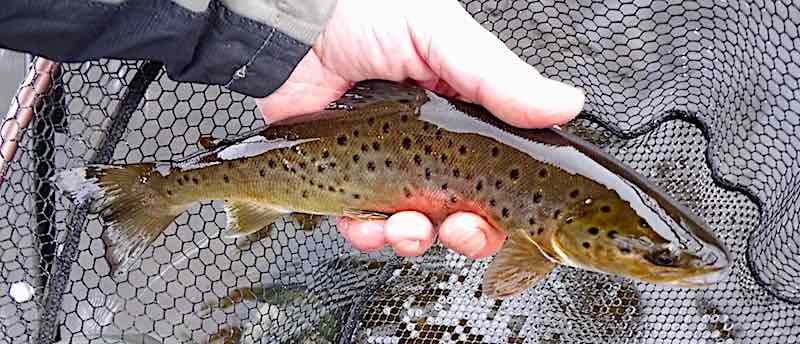
Fishing Twll Run with the dry fly:
If fish taking flies from the surface, it’s usually best to target them with the dry fly. It’s best to approach the river with care and keep a low profile.
Usually, fly choice depends on what is hatching but below are three fly patterns that often catch trout and grayling on the Welsh Dee.
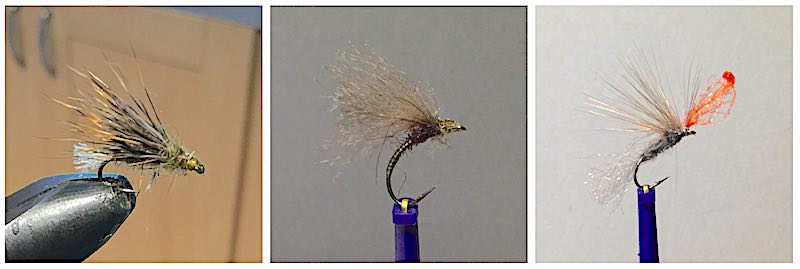
Matching a fly hatch on the Welsh Dee:
I produced a fly guide that is designed to help anglers identify the flies hatching on the Welsh Dee and recommend a suitable artificial fly pattern to try.
The flies are organised in the time of the year they would normally start to hatch on UK rivers. Each natural fly has a brief description covering how to identify it, its habitat, and when you are like to see the fly hatching.
In addition, the following link will take you to the blog post covering the flies that I use throughout the year on the Welsh Dee and will help in learning how to fish Twll Run.
Directions & Parking
Park in Bangor-On-Dee village and walk through the gate, which takes you down a track just passed the to the Royal Oak Pub. At the end of the lane go through the gate into the field and follow the path by the river through two styles. Continue through the next field. Halfway through the fourth field, where the river bends to the right, take the path down to the river.
[Disclaimer – like most outdoor sports, fishing is not without its hazards. Therefore, you MUST do your own RISK ASSESSMENT before starting to fish; especially if you decide to wade and/or fish at night. In addition, you must follow the Bangor-On-Dee Salmon Anglers club rules when fishing this water.]
How to fish Tall Run with Andrew.